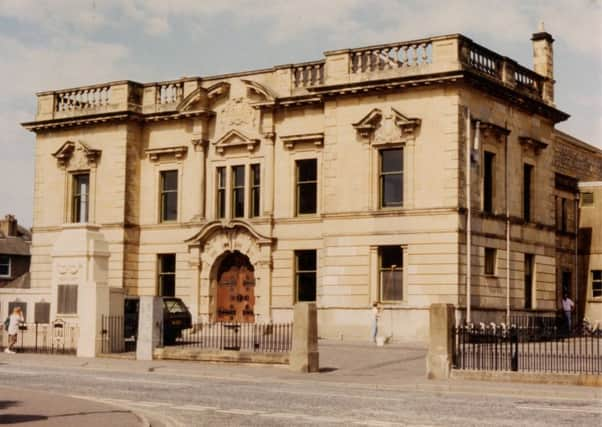Memorials in stone abound in Falkirk district


Now I’m not saying for a moment that Falkirk’s Victorian architect William Black was a new Christopher Wren but it is certainly true that his memorials in stone can still be found in every corner of Falkirk district.
Many others have been lost to so-called progress over the years but an astonishing number are still in use after more than a century.
Advertisement
Hide AdAdvertisement
Hide AdSchools, banks, town halls, hospitals and other public buildings flowed from his drawing board as the powers-that-be responded to Falkirk’s growing prosperity generated by the expansion of the iron industry.
William Black was born in Falkirk in 1840 and attended the Parish School which was then held in the Pleasance.
His father Alexander was the burgh architect and young William became his apprentice soon after leaving school.
It was the time of the railway boom and the boy was sent north to the Highland Railway to learn his craft designing stations, hotels etc. After a further spell doing the same in Glasgow he returned to Falkirk to join his father in partnership and when Alexander died in 1876 William’s local career began in earnest.
Advertisement
Hide AdAdvertisement
Hide AdNot including private houses and extensions to existing buildings I have counted 22 major new buildings erected to his design between then and his retirement in 1914 at the age of 74.
His first work was possibly his finest. The town hall in Newmarket Street, which was sadly demolished in 1968, was a beautiful classical style building with round arched windows which opened its doors in 1879.
In the same year, across the road, the surviving burgh buildings opened to house the town council. It is a fine example of the Scottish baronial style which was so popular at the time and still stands in beautiful contrast to much of the uninspiring concrete and glass rubbish that followed in the mid-20th century.
William’s first church was the present Bainsford Parish building (1879) followed by Avonbridge (1889), Laurieston (1893) and finally the Erskine (1905) of which he was a lifelong member. He was responsible for the new Burgh Hospital in 1881 and the first Falkirk Infirmary in Thornhill Road in 1889 which was his contribution to the fund raising campaign.
Advertisement
Hide AdAdvertisement
Hide AdPrimary schools at Larbert (1890) and Victoria (1900) came either side of the new Falkirk High School in Rennie Street (1898) and the TSB building in the High Street.
Grangemouth Town Hall (1884) and the Victoria Library (1888) came after he had helped design Zetland Park in 1881 and the Dobbie Hall was completed in similar style to Grangemouth in 1900.
To all these we can add the Falkirk drill hall (1900), the masonic hall in Stenhousemuir (1902) and the plice station in West Bridge Street (1904) replaced a few years ago.
Given this huge volume of work it is surprising that William had enough time to become one of the town’s most active citizens. A keen curler, bowler and chess player he was also an active member the Erskine United Presbyterian Church.
Advertisement
Hide AdAdvertisement
Hide AdBy far his greatest enthusiasm was for freemasonry. He joined Lodge St John 16 in 1876 and served as the worshipful master from 1882. He went on to hold high office as provincial master of Stirlingshire and at national level served on the committee of the Grand Lodge of Scotland.
William Black died aged 81 in 1921 and is buried in Camelon Cemetery but, like his illustrious predecessor, his real memorial is all around us.